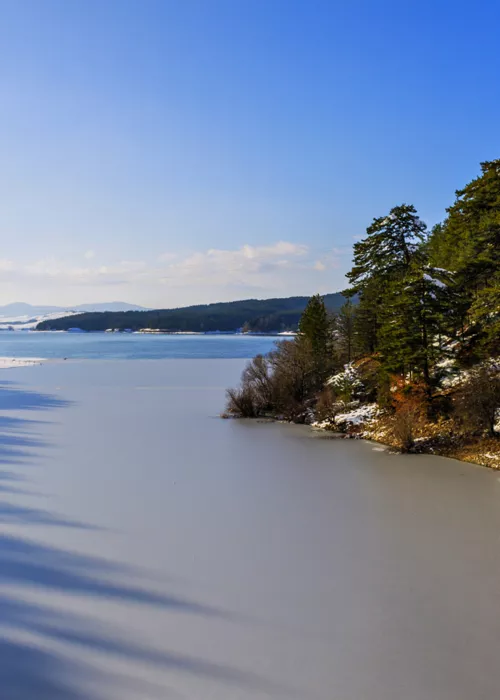Maratea, a Lucanian outlet on the Tyrrhenian Sea

The route we propose starts from Sapri, one of the southernmost municipalities in the province of Salerno and the whole of Campania. On the Scialandro rock, less than a mile to the left of the harbour entrance, you can see the bronze statue of the Gleaner, commemorating Carlo Pisacane's revolutionary attempt against the Bourbons. Sapri, a town with numerous attributes set in a small bay in the Gulf of Policastro, is reflected in a crystal-clear sea and surrounded behind by the Southern Apennine mountains.
Before setting sail, dive into the abundant flavours of a cuisine that tells the story of a region that drops rapidly from the mountains to the sea. Dishes rich in character that go well with the boldness of the wines, red and white, Cilento DOC.
Enchanting scenery, composed of endless kilometres of jagged cliffs, caves, stacks, overhangs and beaches, surrounded by the Dolomite chain, dotted in turn with villages, castles and Saracen towers, accompanies us towards Maratea, the only town in Basilicata that faces the Tyrrhenian Sea. Welcoming you with outstretched arms, from the summit of Mount San Biagio, is the large statue of Christ the Redeemer, one of the tallest in Italy, at 22 metres in height. The marina of Maratea introduces you to an ancient and charming town.
Listed among Italy's Most Beautiful Towns and repeatedly awarded the Blue Flag for its sea, Maratea is also known as the 'city of 44 churches'. Large basilicas and small chapels dot the historic centre and the various districts, containing works of art that bear witness to the town's ancient origins.
In Maratea, and on the neighbouring islet of Santo Janni, the Romans produced garum, a fermented fish sauce, the pride of the Caesars' tables, from which the fish sauce delicacy colatura di alici is derived.
From the Roman historian Varro we also find evidence of another product of the local cuisine: the Lucanica sausage, so called "because our soldiers learned how to make it from the Lucanians". In the historic centre and the numerous districts, you'll have no difficulty enjoying traditional dishes and wines and spending a few relaxing hours before resuming your journey.
Vibo Valentia, in the heart of Calabria

The longest stretch of the route now awaits you. After leaving Maratea and passing the mouth of the Noce River, and Basilicata, you begin the descent of the long coast of Calabria. Set a south-westerly course and sail 37 miles: you arrive at Cetraro, heading towards Cape Bonifati. Along the coast, you'll sail past Praia a Mare, the Island of Dino and Scalea, three locations that are worth a stop. Head out towards the islet of Cirella, three miles off the Diamante coast, marked by an ancient tower on its peak. Stop by the Sea Museum, the Monte Serra Sanctuary and the beaches at Lampetia and Scogliera dei Rizzi.
Get back on the boat and sail towards Amantea, leaving Paola on your left and heading for Monte Cocuzzo: the village's medieval architecture, particularly the Cathedral and the Castle, are worth a visit. Thirty-six miles, starting from Capo Suvero, which leads to the Gulf of Sant'Eufemia, on which lies Lamezia Terme beach, and make a stop in Vibo Valentia.
Stromboli and the Aeolian Islands

Travel 15 miles from Vibo adn you come to Tropea, the Saint Tropez of Calabria and pearl of the Tyrrhenian Sea, with its spectacular cliff, set in the Coast of the Gods. You have reached the final destination of the route. Take the opportunity to visit the town, its historical centre dating back to the Angevin-Aragonese period, the Benedictine Sanctuary of Santa Maria dell'Isola, the Cathedral and the Diocesan Museum. Try one of the famous red onions, on its own or features in the many local dishes. If your desire for the sea is still not sated, you could proceed to the Aeolian Islands. Get back on board and head due west for about 33 miles, guided by the volcano's smoke: you'll see Stromboli and Strombolicchio, a small lava cone thrown into the sea, with enchanting views. A place to rejuvenate, body and soul.






















